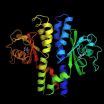(Press-News.org) In the battle against HIV/AIDS conditions on the frontlines are constantly in flux as treatment, research and policy evolve. The landmark HIV Prevention Trials Network (HPTN) 052 study, which established that antiretroviral treatment in people who are HIV positive decreases the likelihood of transmitting HIV to their sexual partners, was no exception. One year after publication the study serves as a case study of ethical challenges faced at every stage of the research trial process in the new paper "Establishing HIV treatment as prevention in the HIV Prevention Trials Network 052 randomized trial: an ethical odyssey," published in the June 2012 issue of Clinical Trials.
HPTN 052 was designed to investigate two questions related to the use of antiretroviral treatment (ART). First, can ART be used to prevent sexual transmission of the HIV virus, and second, is earlier use of ART better for the health of someone who is already HIV positive? In 2007, the full trial began at 13 sites in 9 countries, with 1763 couples enrolled. In each couple, one partner was HIV-positive and one HIV-negative.
"HPTN 052 provides useful real-world examples of the types of ethical difficulties faced when conducting research that has profound implications for public health and how these difficulties can be managed in order to both protect the participants and do good science," says Jeremy Sugarman, MD, MPH, MA, co-author of the paper and deputy director for medicine of the Johns Hopkins Berman Institute of Bioethics.
To address the research questions, study participants were randomly assigned to two groups – one that would receive ART earlier, and the other at a later stage of HIV progression. This became a source of ethical tensions as the trial progressed and enthusiasm for earlier ART treatment grew, whereas previously it had been considered potentially unsafe. For example, in November 2009 the World Health Organization (WHO) issued new guidelines recommending that ART treatment begin earlier.
The deliberation and evolving guidance on ART treatment "brought into sharp focus the ethical tensions inherent to a moral obligation to intervene and the sometimes-conflicting need for gathering data to develop evidence-based practices," write Sugarman and his co-authors Myron S. Cohen, MD, and MaryBeth McCauley, M.P.H.
The authors point to the "constant threat" from observational and ecological study data, and the official guidelines they inspire, as posing a critically important ethical lesson of HPTN 052: whether and how a randomized trial should respond in light of them. "As these necessary changes were made, they threatened the very research that might support or refute the recommendations themselves," they write. The authors credit the Data and Safety Monitoring Board (DSMB), which met 11 times during the trial, for helping make critical calls as new developments arose during the trial, and maintaining essential communication with the investigators and Institutional Review Boards.
Yet even as HPTN 052 was being designed, ethical questions were raised as to the potential "coercion" of participants who would otherwise not have access to ART. The authors agree that "the unavailability of ART at the research sites reflected long-standing issues of global justice," but point out that initiatives coinciding with (but separate from) the trial by the WHO, the Global Fund to Fight AIDS, Tuberculosis, and Malaria, as well as the President's Emergency Plan for AIDS Relief (PEPFAR) made ART much more widely available without having to enroll in HPTN 052.
The authors also address the question of the study's potential to encourage unsafe sex for the sake of research results into the transmissibility of HIV, a common ethical issue raised in HIV research. The authors assert that "including a 'prevention package' is ethically obligatory," and should include methods known to be effective and accessible to participants.
"Throughout the course of the trial, the search for 'scientific truth' had to be weighed along with the rights and welfare of the subjects," said Sugarman.
Though some of the results of HPTN 052 were published in May 2011, the trial is still ongoing and will continue as planned until 2015, to assess long-term outcomes of early versus late ART treatment.
INFORMATION: END
EUGENE, Ore. -- (June 14, 2012) -- University of Oregon scientists have discovered how the bacterium Helicobacter pylori navigates through the acidic stomach, opening up new possibilities to inactivate its disease-causing ability without using current strategies that often fail or are discontinued because of side effects.
Their report -- online ahead of regular publication July 3 in the journal Structure -- unveils the crystal structure of H. pylori's acid receptor TlpB. The receptor has an external protrusion, identified as a PAS domain, bound by a small molecule called ...
Soaring numbers of older, sicker prisoners are causing an unprecedented health care challenge for the nation's criminal justice system, according to a new UCSF report.
As the American penal system confronts a costly demographic shift toward older prisoners, the authors call for an overhaul in health care practices for elderly inmates who disproportionately account for escalating medical expenses behind bars. The recommendations include screening for dementia among prisoners, improved palliative care, and standard policies for geriatric housing units for infirm inmates.
The ...
Energy efficiency is the most significant challenge standing in the way of continued miniaturization of electronic systems, and miniaturization is the principal driver of the semiconductor industry. "As we approach the ultimate limits of Moore's Law, however, silicon will have to be replaced in order to miniaturize further," said Jeffrey Bokor, deputy director for science at the Molecular Foundry at the Lawrence Berkeley National Laboratory and Professor at UC-Berkeley.
To this end, carbon nanotubes (CNTs) are a significant departure from traditional silicon technologies ...
Visual and auditory stimuli that elicit high levels of engagement and emotional response can be linked to reliable patterns of brain activity, a team of researchers from The City College of New York and Columbia University reports. Their findings could lead to new ways for producers of films, television programs and commercials to predict what kinds of scenes their audiences will respond to.
"Peak correlations of neural activity across viewings can occur in remarkable correspondence with arousing moments of the film," the researchers said in an article published in the ...
An international team of researchers' study of the spatial patterns of the spread of obesity suggests America's bulging waistlines may have more to do with collective behavior than genetics or individual choices. The team, led by City College of New York physicist Hernán Makse, found correlations between the epidemic's geography and food marketing and distribution patterns.
"We found there is a relationship between the prevalence of obesity and the growth of the supermarket economy," Professor Makse said. "While we can't claim causality because we don't know whether obesity ...
CHAMPAIGN, Ill. — Experienced anglers know that choppy waters make for difficult fishing, so they try not to rock the boat. Thanks to a new microscopy technique, cell biology researchers can heed that same advice.
University of Illinois researchers developed a method they call "trolling AFM," which allows them to study soft biological samples in liquid with high resolution and high quality. Led by mechanical science and engineering professor Min-Feng Yu, the group published its findings in the journal Nanotechnology.
"We developed a highly sensitive method for high-resolution ...
(Boston) – A recent study conducted by researchers at Boston Medical Center (BMC) shows that patients receiving "take home" methadone maintenance treatment (MMT) were less likely to be admitted to the hospital as compared to those not receiving take home doses. The findings, which are published online in the Journal of Addiction Medicine, demonstrate the potential benefits of successful addiction treatment, including better overall health and decreased health care utilization.
This research was led by Alexander Walley, MD, MSc, physician in general internal medicine at ...
Nine out of 10 Californians under the age of 65 will be enrolled in health insurance programs as a result of the Patient Protection and Affordable Care Act (ACA), according to a joint study by the UC Berkeley Center for Labor Research and Education and the UCLA Center for Health Policy Research.
Between 1.8 million and 2.7 million previously uninsured Californians will gain coverage by 2019, when the law's effect is fully realized, the researchers said.
The report, which uses a sophisticated computer simulation model to project the ACA's impact on insurance coverage, ...
PHILADELPHIA—It has long been known that cancer is a disease of aging, but a molecular link between the two has remained elusive.
Now, researchers at the Kimmel Cancer Center at Jefferson (KCC) have shown that senescence (aging cells which lose their ability to divide) and autophagy (self-eating or self-cannibalism) in the surrounding normal cells of a tumor are essentially two sides of the same coin, acting as "food" to fuel cancer cell growth and metastasis.
Michael P. Lisanti, M.D., Ph.D., Professor and Chair of Stem Cell Biology and Regenerative Medicine at Jefferson ...
Ottawa, Ontario (June 14, 2012) – Most children and youth who consume soft drinks and other sweetened beverages, such as fruit punch and lemonade, are not at any higher risk for obesity than their peers who drink healthy beverages, says a new study published in the October issue of Applied Physiology, Nutrition, and Metabolism. The study examined the relationship between beverage intake patterns of Canadian children and their risk for obesity and found sweetened beverage intake to be a risk factor only in boys aged 6-11.
"We found sweetened drinks to be dominant beverages ...



